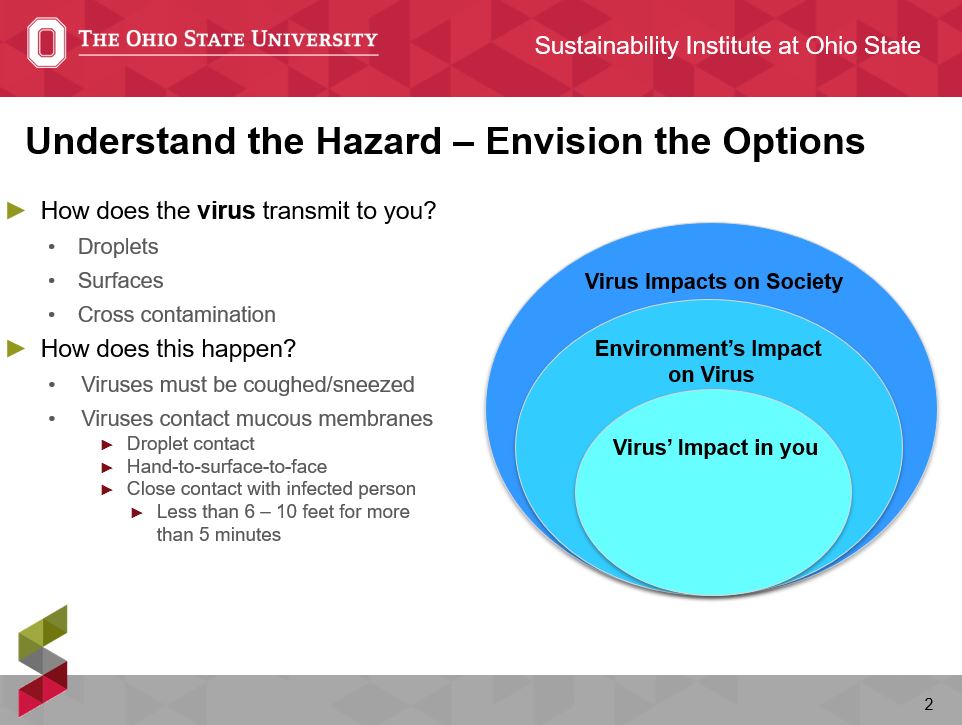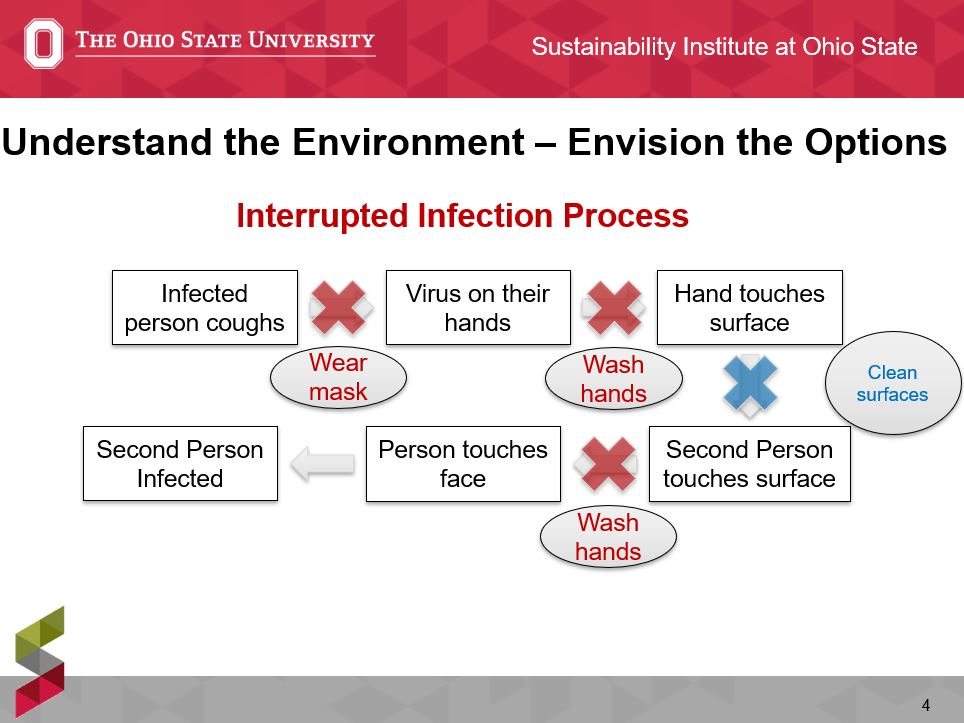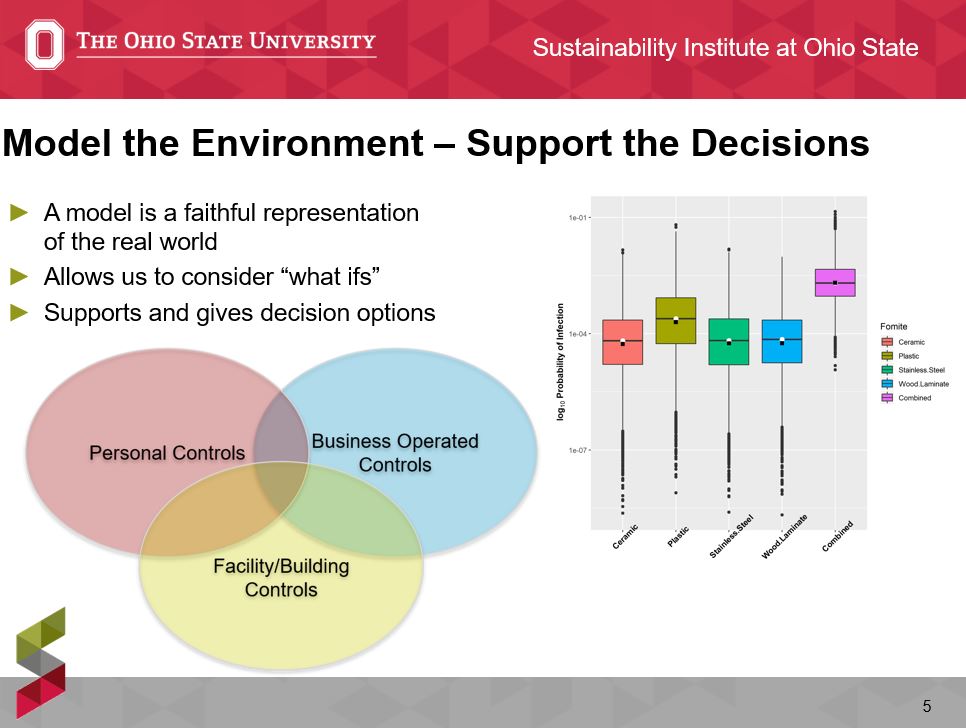Ohioans have been doing a great job in your efforts to slay the beast that is the coronavirus. But it is still very much with us. We have @OSUPublicHealth& #39;s Mark H. Weir EIT. Ph.D. here with us today to discuss the guidance he would give as we move forward.
This is a marathon and not a sprint, and as we move forward, we owe it to you to do so in a thoughtful, methodical way. So today, we want to share some of the underlying science behind social distancing, masks, and other efforts that help make us all as safe as possible.
Dr. Weir: The virus is emitted through your cough or sneeze as a droplet. Surfaces are important b/c if you touch a contaminated surface, then you& #39;ve contaminated your hand and can contaminate other surfaces. We must answer how we can limit the impact on society.
Dr. Weir: This is the infection process.  https://abs.twimg.com/emoji/v2/... draggable="false" alt="⬇" title="Downwards arrow" aria-label="Emoji: Downwards arrow">
https://abs.twimg.com/emoji/v2/... draggable="false" alt="⬇" title="Downwards arrow" aria-label="Emoji: Downwards arrow">
Interrupting the process involves multiple parties working together to stop the virus. We can block the movement of the virus in multiple locations.
Interrupting the process involves multiple parties working together to stop the virus. We can block the movement of the virus in multiple locations.
Dr. Weir: Models allow us to consider "what ifs," and they give us decision options.  https://abs.twimg.com/emoji/v2/... draggable="false" alt="⬇" title="Downwards arrow" aria-label="Emoji: Downwards arrow">
https://abs.twimg.com/emoji/v2/... draggable="false" alt="⬇" title="Downwards arrow" aria-label="Emoji: Downwards arrow">
Dr. Weir on masks: If you are wearing a mask, you are protecting those around you, and you are providing yourself an additional layer of protection as well. The type of material will give different ranges of risk protection.
Dr. Weir: When you cough or sneeze, droplets spread through the air. The light droplets will go farther, and the heavier ones will fall from the air. With #COVID19 you are spreading various-sized particles that will travel 6-10 feet based on environmental circumstances.
Dr. Weir: Therefore, even if you are wearing a mask, you still want to keep that distance between people. That& #39;s why we need multiple barriers - the social distancing is another barrier we can use in addition to masks.
Dr. Weir: Stacking interventions on top of each other will allow us to move around with more freedom and get #Ohio back to work while we maintain our safety. It& #39;ll take each Ohioan to seriously consider themselves and their neighbor& #39;s health as they go about their daily lives.
Dr. Weir: The virus can stay viable in the air in a dry environment for up to three hours. On some surfaces, it can be up to 72 hours, but that& #39;s if you don& #39;t do anything to the virus. If you use certain disinfectants, it will remove 99.9% of the viruses.
Dr. Weir: When you freeze something, you damage the cells. The same will happen with viruses, you damage the viruses. Freezing, however, is not a silver bullet. It will have some effect, but cooking will have even more of an effect. Viruses do not survive heat well at all.
Dr. Weir on air conditioning and heating: Filters do a very good job: the thicker the filter, the more removal of viruses. If you own a building, if you increase the size and number of filters in your HVAC or if you look at air treatment technology, you could protect 100s or more

 Read on Twitter
Read on Twitter
 Interrupting the process involves multiple parties working together to stop the virus. We can block the movement of the virus in multiple locations." title="Dr. Weir: This is the infection process. https://abs.twimg.com/emoji/v2/... draggable="false" alt="⬇" title="Downwards arrow" aria-label="Emoji: Downwards arrow"> Interrupting the process involves multiple parties working together to stop the virus. We can block the movement of the virus in multiple locations." class="img-responsive" style="max-width:100%;"/>
Interrupting the process involves multiple parties working together to stop the virus. We can block the movement of the virus in multiple locations." title="Dr. Weir: This is the infection process. https://abs.twimg.com/emoji/v2/... draggable="false" alt="⬇" title="Downwards arrow" aria-label="Emoji: Downwards arrow"> Interrupting the process involves multiple parties working together to stop the virus. We can block the movement of the virus in multiple locations." class="img-responsive" style="max-width:100%;"/>
 " title="Dr. Weir: Models allow us to consider "what ifs," and they give us decision options. https://abs.twimg.com/emoji/v2/... draggable="false" alt="⬇" title="Downwards arrow" aria-label="Emoji: Downwards arrow">" class="img-responsive" style="max-width:100%;"/>
" title="Dr. Weir: Models allow us to consider "what ifs," and they give us decision options. https://abs.twimg.com/emoji/v2/... draggable="false" alt="⬇" title="Downwards arrow" aria-label="Emoji: Downwards arrow">" class="img-responsive" style="max-width:100%;"/>



